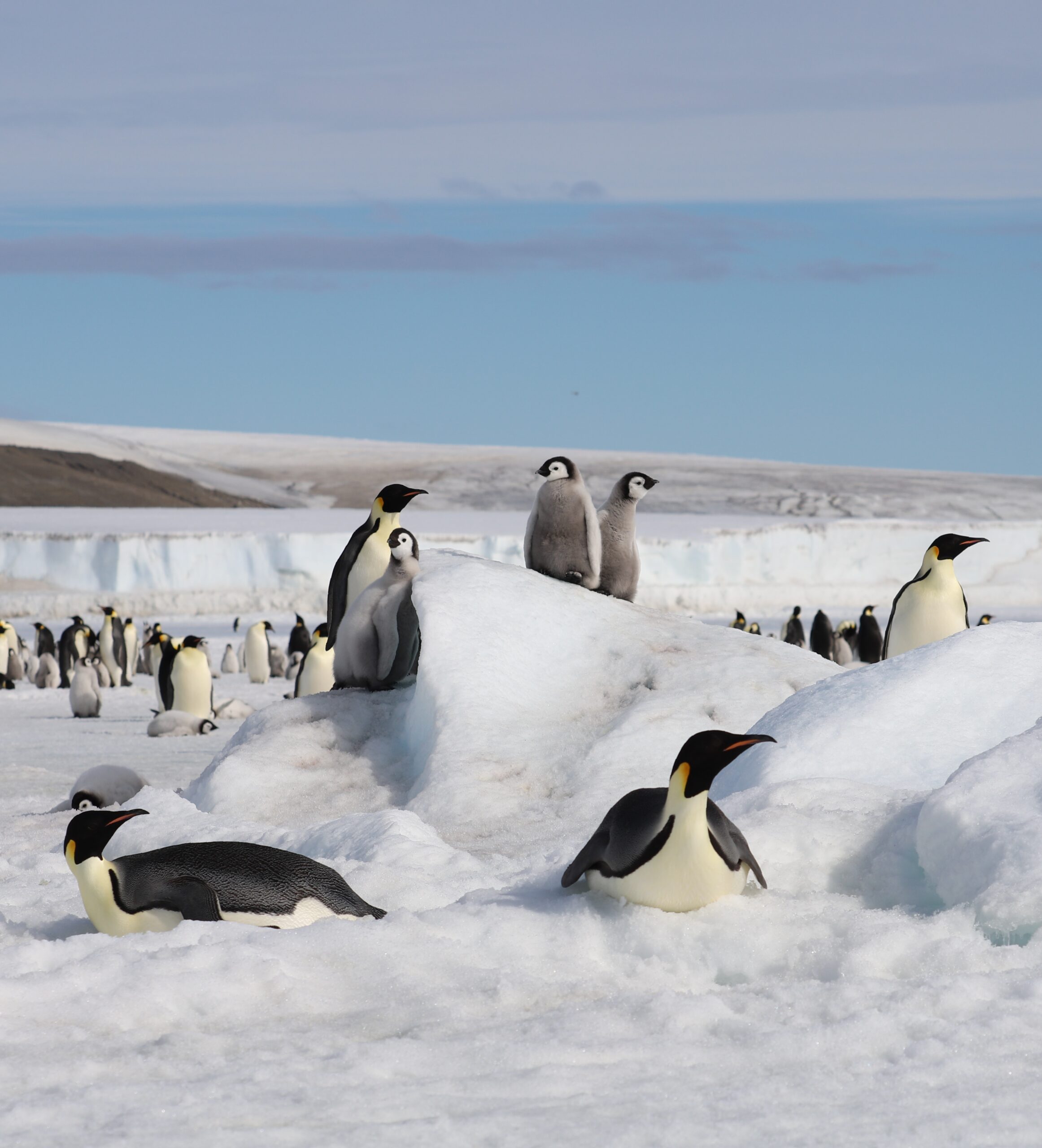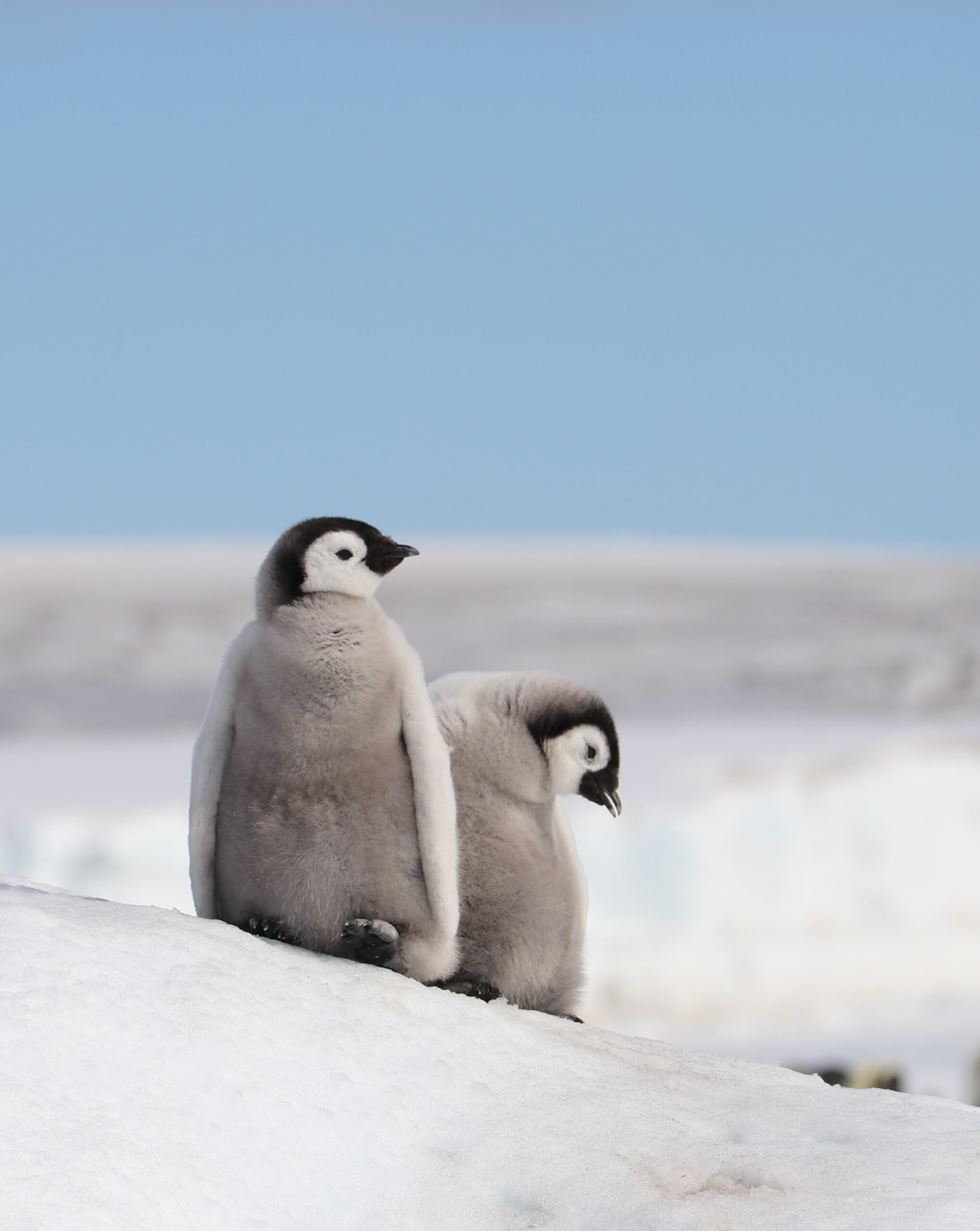Record low levels of Antarctic sea-ice in late 2023 resulted in breeding failures in a fifth of the continent's emperor penguin colonies, according to a new study from British Antarctic Survey (BAS).
With 14 of 66 colonies and tens of thousands of penguins affected, the finding is not as severe as the 2022 season, in which 19 colonies - almost 30% - were impacted, but there is an increasing trend of colonies losing chicks as a result of ice-loss before the end of the breeding cycle, with 2023 the second worst year since the observations began in 2018.
Emperor penguins breed and raise their chicks on land-fast sea ice - stable sea ice that is firmly attached to the shore. If this ice breaks up too early, the chicks go into the sea before they grow their waterproof feathers - known as fledging. This leads to high, or sometimes total, chick mortality at the colony.

Current predictions suggest that in scenarios in which greenhouse gas emissions continue to rise at current levels, the population of emperor penguins will fall by 99% by the end of the century, leading to the virtual extinction of this charismatic animal.
The study, published today on World Penguin Day (Thursday 25 April) in the journal Antarctic Science, uses satellite data from the Copernicus Programme's Sentinel-2, and reveals the extent of the impact of early sea ice breakup on the penguins' breeding cycle.

Author of the study, Dr Peter Fretwell, who studies wildlife from space and is a Geographic Information Officer at BAS, says:
"As the continent warms we are seeing the ice break out earlier, leading to higher chick mortality. With fewer chicks surviving at many colonies, it is likely that over time a number of current breeding sites will become untenable, and the overall population will decline. This is a future that our climate models predict."
Although 2023 had a lower sea-ice extent than 2022 in all months of the breeding season except December, the number of sea-ice break-up events was not as high as in 2022, and therefore the detrimental impact on emperor penguin breeding success was less than predicted.
Several colonies that were badly affected in 2022 also showed adaptations, with some moving home to find more stable ice and some breeding on icebergs or ice shelves.
Dr Fretwell says:
"The fact that we are seeing these adaptations in the worst affected colonies gives us some hope that the birds can react to their changing environment and move to find more stable ice. It also seems that overall sea-ice concentration levels do not always translate to early fast ice break-up at the colonies, with more subtle regional factors, such as the persistence of El Niño and La Niña cycles also play an important part."
The Copernicus Programme's Sentinel-2 satellite passes the Antarctic coastline around once a week and its archive stretches back six years to 2018. Its data is free to access and download.
Emperor penguins at Clark Bay Sept-Dec 2023 (British Antarctic Survey, Copernicus Sentinel 2)
Over the last seven years, spring and summer sea-ice extent in all seasons around Antarctica have fallen significantly, with four of the lowest sea-ice extent minima recorded since 2016. The years 2022 and 2023 had record low summer sea-ice extents and represent the first in the satellite record (1979-2023) during which the area of Antarctic sea ice dropped below 2 million km2.
As part of the paper published today, a new map of emperor penguin colony locations for 2023 has been released for Google Earth.
A 6-year assessment of low sea-ice impacts on emperor penguins by Fretwell, P. is published in Antarctic Science today.






